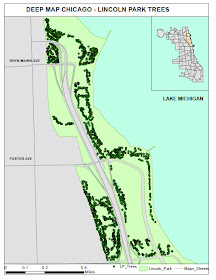Familiar stuff all of this, I’m sure. Thomas Kuhn, the
philosopher and historian of science, coined the term “paradigm” for those
"universally recognized scientific achievements that, for a time, provide
model problems and solutions for a community of researchers" and
professors have employed that term tirelessly when words like “model” or
“pattern” or “program” just seem too darned plain. In contrast with the
“mop-up” work that is the business of “normal science” operating within a given
scientific paradigm (and who wouldn’t get excited about mop-up jobs) Kuhn
identified the manner in which rapid change in science is compressed into its
major revolutionary events.
For now my interest is not merely in the ways in which
Kuhnian analysis can be applied to ecology. Rather, I am curious about how
Kuhn’s model of paradigms and revolutions not only assists in developing our
explicit expectations of what revolutionary ecology makes possible, but also in
how ecological thought can double back and influence the way in which we might
think about the history of science in general. The revolution I have especially
in mind, as I will elaborate below, is that associated with a resurgence of
interest in ecological dynamics: ideas about the structure, function of
ecological systems and the way these systems respond to disturbance. Ecologists
are developing these conceptions at a level of generality that makes their
models epistemologically relevant to phenomena as diverse as lakes, financial
markets, and the history of science itself. So a paradigmatic shift relating to
theories of change in ecology allows ecology to reflect on the nature of all
paradigmatic shifts including its own ones. In this sense there is an ecology
of knowledge, and ecologists therefore can benefit from collaboration with, and insight from, non-traditional
partners in the humanities, in particular, with those that reflect on stability and change in systems not typically of interest to ecologists. Kuhn is just one such anomalous partner. In return, ecology may return the favor by exporting insights
gleaned from the study of nature, making them available for the behavior of other complex systems.
***









